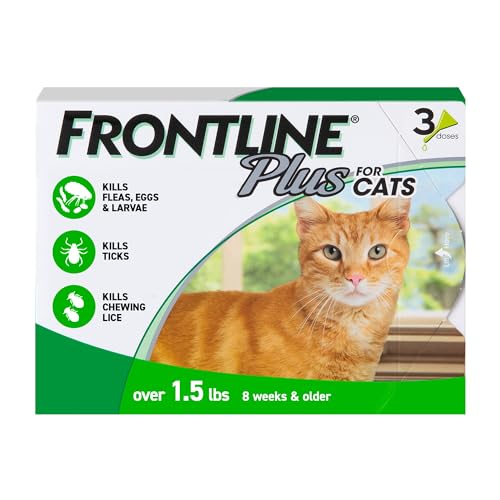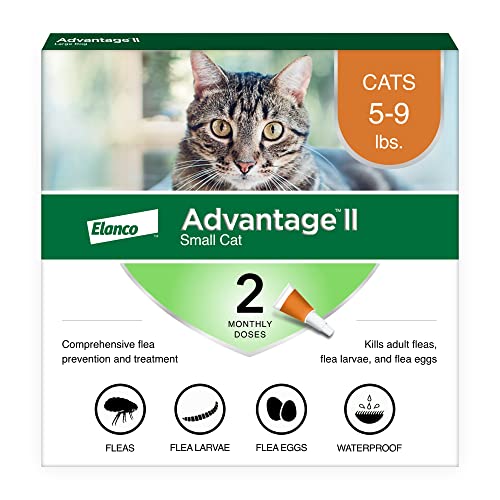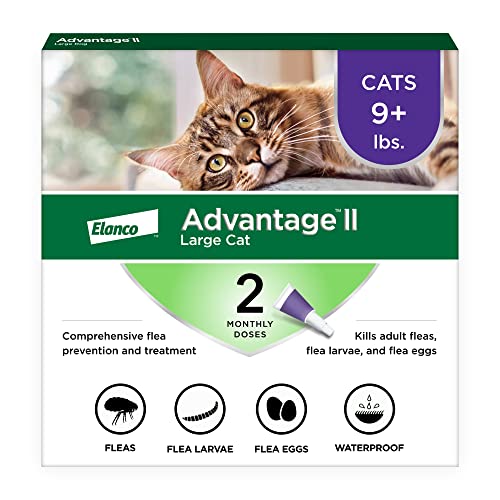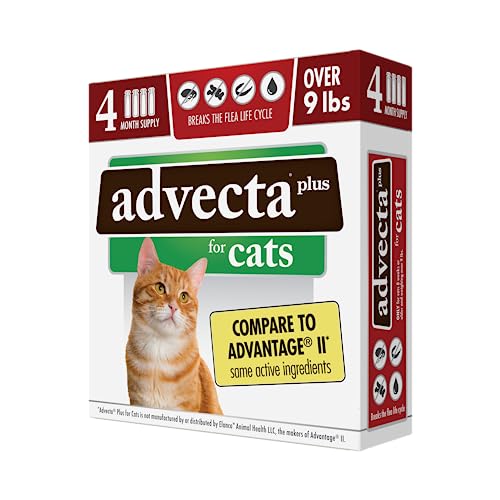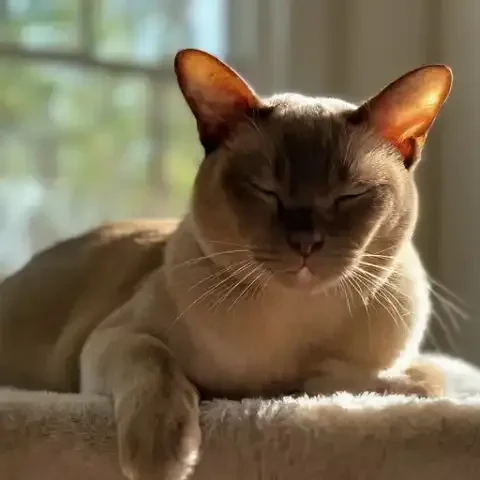What is it about cats? That enigmatic gaze, the soft purr rumbling against your hand, the playful swat at a dangling toy, the independent spirit coupled with moments of profound affection – it's a captivating blend that has drawn humans into feline companionship for centuries. For those of us already charmed by these creatures, or for those just contemplating opening their lives and homes to a cat, understanding the intricacies of feline care and connection is key to building a truly rewarding relationship. Consider this your definitive resource, your all-encompassing guide to navigating the delightful world of cat ownership. From the very first considerations of choosing the right feline friend, to creating a purrfectly cat-friendly home, mastering the art of feline communication, ensuring optimal health, and nurturing a bond that will enrich both your lives for years to come, we will explore every facet of the cat lover's journey. Whether you're a seasoned cat aficionado or just beginning to appreciate the wonders of feline companionship, prepare to deepen your knowledge, enhance your connection, and truly become the ultimate cat lover.
When embarking on the journey of cat companionship, one of the most exciting first steps is choosing your feline friend. While the allure of a specific breed can be strong, especially with the distinct looks and sometimes predictable temperaments associated with breeds like the regal Persian or the playful Siamese, it’s crucial to remember that in the vast majority of cases, individual personality trumps breed stereotypes. Just like people, each cat is a unique individual, shaped by genetics, early experiences, and environment. Focusing primarily on breed might lead you to overlook a truly wonderful companion whose personality might be the perfect fit for you, regardless of pedigree.
Where do you find this purrfect match? For many seasoned cat lovers, the answer is clear: adoption. Shelters and rescues are brimming with cats of all ages, breeds (and delightful mixes!), and personalities, each hoping for a loving forever home. Choosing to adopt is not only a compassionate act, offering a second chance to a deserving animal, but it’s also often incredibly rewarding. Dispelling the myth of the “damaged” shelter cat is important. Many cats end up in shelters through no fault of their own – perhaps their previous owner had to move, faced financial hardship, or simply wasn't prepared for the commitment of cat ownership. Shelter staff and volunteers often have valuable insights into the personalities of the cats in their care, helping you to find a cat whose temperament aligns with your lifestyle.
Of course, there's also the option of acquiring a cat from a breeder. If you are drawn to a specific breed and are seeking very predictable traits, then a responsible breeder might be the route for you. However, it’s paramount to distinguish between ethical, responsible breeders and less scrupulous “backyard breeders”. Responsible breeders prioritize the health and temperament of their cats, breed to improve the breed standard, and are knowledgeable about genetics and potential health issues within their breed. They will be transparent, allow you to meet the cat's parents (if possible), and will be genuinely concerned about finding their kittens good homes. Be wary of breeders who are only motivated by profit, who don't seem to know much about their breed, or who won’t let you see their facilities.
Sometimes, fate intervenes in the form of a stray or feral encounter. Finding a stray kitten, or even an adult cat in need, can tug at the heartstrings. If you encounter a stray, responsible action is key. For feral cats, Trap-Neuter-Return (TNR) programs are often the most humane and effective way to manage populations. For kittens or seemingly lost domestic cats, try to assess if they are truly stray or if they have an owner nearby. If they are genuinely stray and you are considering taking them in, be prepared for veterinary care, potential socialization challenges (especially with feral cats or older strays), and the understanding that not every stray cat can or should be forced into a fully domesticated lifestyle. Sometimes, providing outdoor shelter and food might be the kindest option for a truly feral cat, while attempting to socialize a younger stray kitten might be successful with patience and gentle handling.
Another crucial decision point is choosing between a kitten and an adult cat. Kittens, with their boundless energy and undeniable cuteness, are undeniably appealing. They are often considered easier to socialize into a multi-pet household (though this is not guaranteed!), and you get to witness their entire life journey. However, kittens are also a significant amount of work. They require more frequent feeding, training, and often have bursts of intense energy. Their personalities are still developing, so while you might have a general idea, their adult temperament is not fully formed. Kittenhood is also a longer commitment, potentially 15-20 years or more.
Adult cats, on the other hand, offer the advantage of a known personality. What you see is generally what you get in terms of temperament and energy levels. Many adult cats are already litter trained, may be calmer, and often are incredibly grateful for a second chance at a loving home, especially those from shelters. Adopting an adult cat, particularly a senior cat, is an incredibly compassionate act, providing comfort and love in their later years. However, adult cats may come with pre-existing conditions that you need to be aware of, and integrating an adult cat into a household with existing pets may require more careful and patient introduction.
Ultimately, aligning a cat with your lifestyle is paramount. Consider your living situation: apartment versus house, indoor-only versus potential for safe outdoor access (if you choose to allow it, always prioritize safety). Think about your household dynamics: children, other pets, and your own busy schedule. A high-energy kitten might not be the best fit for a very quiet, elderly household, while a calmer adult cat might thrive in a more relaxed environment. Be realistic about your time commitment. Cats, while independent, still require daily attention, playtime, grooming, and interaction.
Finally, the "meet and greet" is essential. When you’ve narrowed down your choices, spend time interacting with potential cats. Observe their behavior: are they curious and outgoing, shy and reserved, playful or more laid-back? Gently interact with them: how do they respond to petting, play, and your presence? Look for compatibility – a cat whose personality resonates with yours and whose needs you can genuinely meet. Choosing your purrfect companion is about finding a connection, a feline friend who will enrich your life and home with their unique charm and companionship.
Once you’ve chosen your feline friend, creating a cat-friendly home is paramount for their happiness and well-being. Inside your home, several essentials contribute to a cat's sense of security and comfort. Food and water stations should be placed in quiet, accessible areas away from high-traffic zones and litter boxes. Consider using wide, shallow bowls to prevent whisker fatigue, and explore water fountains, which many cats find more appealing due to the moving water. Hygiene is key – clean food and water bowls daily.
Litter boxes are a non-negotiable necessity. Offer a variety of litter box types initially – covered, uncovered, different sizes – to discover your cat’s preference. Placement is crucial: choose quiet, private locations that are easily accessible but away from food and water. The general rule of thumb for multi-cat households is one litter box per cat plus one extra to prevent competition and territorial issues. Scooping litter boxes at least once daily, or even twice, is essential for hygiene and will encourage your cat to use them consistently.
Scratching is an innate feline behavior – it’s for claw maintenance, stretching, and territory marking. Provide a variety of scratching posts and surfaces: vertical posts, horizontal scratchers, cardboard, sisal, carpet – again, observe your cat’s preference. Placement is strategic: place scratching posts near furniture you want to protect, in high-traffic areas where cats naturally want to stretch and mark their territory, and near sleeping areas.
Cats are natural nappers and appreciate a variety of sleeping and resting areas. Offer cozy beds, blankets, window perches for sunbathing, and elevated spots like cat trees or shelves. Variety is key – cats like to choose their napping spots based on their mood and the time of day. Safe havens and hiding places are equally important. Boxes, tunnels, cat caves, and quiet zones allow cats to retreat when they feel stressed, overwhelmed, or simply want solitude. These spaces provide a sense of security and control over their environment.
Vertical territory is not just a luxury, it’s a necessity for feline happiness. Cat trees and shelves provide vertical space, allowing cats to climb, survey their domain from above, and feel secure. Window perches offer environmental enrichment, allowing cats to watch birds, squirrels, and the outside world – visual stimulation that is incredibly enriching for indoor cats. If you consider safe outdoor access, cat enclosures or cat-proofed gardens provide secure outdoor experiences, allowing them to enjoy fresh air and sunshine without the dangers of roaming free. Leash training, for some cats and owners, can be an option, but it requires patience, gradual introduction, and is not suitable for all cats. Safety is always paramount when considering outdoor access.
Finally, hazard-proofing your home is crucial for cat safety. Toxic plants and substances are a significant danger. Research plants carefully before bringing them into your home and keep all cleaning supplies, medications, and potentially toxic substances securely stored away. Electrical cords and loose wires are tempting chew toys for some cats. Use cord protectors or conceal wires to prevent electrocution. Small objects and string-like toys are ingestion hazards. Always supervise play with string toys and choose cat-safe toys that are too large to be swallowed. Open windows and balconies pose a fall risk. Install secure screens or netting to prevent falls and escapes, especially on upper floors.
Nourishing your feline friend starts with understanding their fundamental nutritional needs. Cats are obligate carnivores, meaning their bodies are biologically designed to thrive on a meat-based diet. Protein is absolutely key for cats – they require significantly higher levels of protein than dogs or humans. Essential nutrients like taurine, also found primarily in meat, are vital for heart health, vision, and digestion. Understanding this carnivorous nature guides all dietary choices.
The debate between dry and wet food is common amongst cat owners. Dry food is convenient, often more affordable, and can be left out for free-feeding (though portion control is still vital). However, dry food has lower moisture content, which can be a concern for cats prone to urinary tract issues or those who don't drink enough water. Wet food has a higher moisture content, which is beneficial for hydration, and many cats find it more palatable. However, wet food is generally more expensive and cannot be left out for extended periods. A combination of both, or primarily wet food, is often a good approach.
Learning to read food labels is essential for making informed choices. Look for named meat sources (like chicken, beef, or fish) as the first ingredients. Be mindful of filler ingredients and excessive carbohydrates, which are not biologically necessary for cats. Check for the Association of American Feed Control Officials (AAFCO) statement, which ensures the food meets nutritional standards for your cat's life stage.
Choosing the right food is also about considering your cat's life stage and specific needs. Kittens require kitten-specific food, higher in calories and nutrients for growth. Adult cats thrive on balanced adult formulas. Senior cats may benefit from senior-specific diets formulated for older bodies, potentially with joint support or easily digestible ingredients. Specific dietary needs might arise due to weight management concerns, allergies, or medical conditions. Consult your veterinarian for guidance on specialized diets if your cat has health issues.
Treats should be given in moderation and should be considered supplemental, not a significant portion of their diet. Choose healthy treat options that are low in calories and made with quality ingredients. Feeding methods and routines also play a role in feline health. Portion control is crucial to prevent overfeeding and obesity, a common health issue in cats. Measure food portions according to the food label guidelines and your vet's recommendations. Scheduled meals, rather than free-feeding, can help with portion control and monitoring appetite. Puzzle feeders and food toys are excellent enrichment tools at mealtime, slowing down eating, providing mental stimulation, and engaging their hunting instincts. Finally, fresh water is vital for hydration. Ensure fresh water is always available, encourage water intake by offering water fountains, and experimenting with different types of water bowls to find your cat’s preference. Be aware of foods to avoid – chocolate, onions, garlic, grapes, raisins, alcohol, caffeine, and raw dough are toxic to cats and should never be given.
Grooming and hygiene are essential for keeping your cat looking and feeling their best, and it extends beyond mere aesthetics. Regular grooming offers significant health benefits. Brushing helps prevent mats and tangles, especially for long-haired cats, and reduces hairballs by removing loose fur. Grooming also stimulates circulation, distributes natural skin oils, and provides a wonderful opportunity for bonding with your cat. Brushing techniques and tools vary based on coat type. Slicker brushes are effective for removing loose fur, while deshedding tools can be helpful for cats who shed heavily. Combs are useful for detangling and smoothing the coat.
Bathing is often less frequent for cats than for dogs, as cats are meticulous self-groomers. Bathing is typically only necessary if your cat gets into something messy, has fleas, or if recommended by your vet for a skin condition. When bathing, use cat-specific shampoo, make it a calm and gentle experience, and ensure thorough rinsing and drying. Nail trimming is essential for indoor cats to prevent overgrowth and scratching damage. Trim nails every few weeks, using cat-specific clippers. Learn the proper technique to avoid cutting the quick (the pink part of the nail). Start nail trimming early in kittenhood to desensitize them to the process.
Dental care is often overlooked but crucial for feline health. Ideally, brush your cat’s teeth daily with cat-specific toothpaste. Dental chews and treats can be supplemental but not a replacement for brushing. Regular veterinary dental cleanings are important to prevent dental disease. Ear cleaning is usually only needed if there is visible debris or signs of infection. Check ears regularly and clean gently with a cat-specific ear cleaner if needed. Avoid using cotton swabs deep in the ear canal. Eye care is usually minimal; a small amount of eye discharge is normal. However, excessive discharge, redness, or squinting could indicate an infection and warrant a vet visit.
Understanding feline behavior is like learning a new language – decoding the subtle cues your cat gives you is key to a deeper connection. Body language is a cat’s primary mode of communication. Tail position is a major indicator of mood: a high, upright tail signals happiness and confidence, a tucked tail indicates fear or submission, a twitching or swishing tail can express agitation or focus. Ear position also speaks volumes: forward ears indicate alertness and interest, flattened ears signal fear or aggression, swiveling ears show attentiveness to sounds. Eyes can be expressive: slow blinks are a sign of trust and affection, dilated pupils can indicate fear, excitement, or low light conditions. Posture reveals much: a relaxed, lounging posture signals contentment, a tense, crouched posture might indicate fear or defensiveness. Whiskers are not just cute, they are sensory tools: forward whiskers show curiosity, flattened whiskers might indicate fear or anxiety.
Vocalizations, while less nuanced than body language, still convey meaning. Meows are primarily for communicating with humans, and different types of meows signal different needs. Purrs are typically associated with contentment and pleasure, but cats can also purr when stressed or injured as a self-soothing mechanism. Hisses are clear warning signals of fear, defensiveness, or aggression. Chattering or chirping often indicates prey drive and excitement, often seen when a cat watches birds or squirrels.
Scent communication is a world of subtlety invisible to our noses. Cats mark their territory using scent glands on their cheeks, paws, and flanks, leaving pheromones. Rubbing against you or objects is not just affection, it’s also scent marking, claiming ownership and creating a familiar environment. Common cat behaviors, when understood, become less mysterious. Scratching is not about being destructive; it’s instinctual territory marking, claw maintenance, and stretching. Kneading is a comfort behavior, a remnant of kittenhood when they kneaded to stimulate milk flow from their mothers. Bunting, or head rubbing, is a sign of affection, social bonding, and scent marking, transferring pheromones. Zoomies, those sudden bursts of frantic energy, are perfectly normal and a way for cats to release pent-up energy, often before or after sleeping. Their sleeping habits, sleeping for a significant portion of the day, are linked to their crepuscular nature – being most active at dawn and dusk – conserving energy for hunting and activity periods.
Recognizing stress and anxiety in cats is crucial for their well-being. Signs of stress can be subtle but important to notice: hiding more than usual, changes in appetite (eating less or more), excessive grooming (leading to bald patches), changes in litter box habits, increased vocalization, or hissing. Potential stressors can range from changes in routine, new pets or people, loud noises, to underlying medical conditions. Understanding feline language and behavior allows you to create a home environment that minimizes stress and maximizes their happiness.
Play and enrichment are not just fun and games; they are essential for a cat’s physical and mental well-being. Play mimics the hunt, satisfying their natural predatory instincts and providing crucial physical and mental exercise. Engage in types of play that mimic the hunting sequence: chase toys on wands, encourage pouncing on toy mice, and allow them to "capture" their toy at the end of the play session to fulfill the hunt cycle. Interactive play, playing with you directly using wand toys or laser pointers (used responsibly – never shine directly in their eyes, and always end on a tangible toy they can “catch”), builds bonds, provides exercise, and is mentally stimulating. Independent play is also important, especially when you are busy. Provide toys they can entertain themselves with: puzzle toys that dispense treats, balls to bat around, crinkle toys for auditory stimulation.
Environmental enrichment goes beyond toys, creating a stimulating and engaging home environment. Window views are incredibly enriching, providing visual stimulation from the outside world – bird feeders placed outside windows can be cat television! Scratching posts and climbing structures provide physical and mental challenges, allowing them to climb, stretch, and explore vertical territory. Variety and rotation of toys keep things interesting and prevent boredom. Rotate toys regularly, introducing “new” toys from storage to maintain novelty. Introducing new smells and textures, like catnip or silvervine (a catnip alternative that works for some cats who don’t react to catnip), and safe cat-friendly plants (ensure they are non-toxic) can provide olfactory and sensory enrichment.
Training your cat? Yes, it's absolutely possible! Cats are intelligent and can be trained using positive reinforcement. Clicker training, using a clicker to mark desired behavior and immediately followed by a treat, is highly effective for cats. You can teach basic commands like “come,” “sit,” or even tricks like “high five,” tailoring training to your cat’s motivation – usually food treats or a favorite toy. Training is not just about tricks; it can be a valuable tool for solving behavioral issues. Instead of punishment, which is ineffective and damaging to the cat-human bond, use redirection and positive alternatives. For example, redirect scratching from furniture to a scratching post, rewarding them when they use the post. Training builds communication, provides mental stimulation, and strengthens your bond with your clever feline companion.
Ensuring your cat’s health and wellness is a lifelong commitment. Finding a veterinarian you trust and establishing regular checkups is the cornerstone of preventative care. Annual checkups are essential for adult cats, and more frequent checkups are recommended for kittens and senior cats. Vaccinations and preventative care are vital for protecting your cat from diseases. Core vaccinations, like FVRCP (feline viral rhinotracheitis, calicivirus, and panleukopenia) and rabies, are generally recommended for all cats. Parasite prevention is crucial. Discuss flea, tick, heartworm, and worm prevention with your veterinarian and choose appropriate preventative medications.
Recognizing signs of illness early is key. Be observant of any changes in your cat’s behavior or physical condition. Changes in appetite (increased or decreased), lethargy, vomiting, diarrhea, changes in urination or thirst, coughing, sneezing, or any unusual lumps or bumps warrant a prompt veterinary visit. Common feline health issues include urinary tract issues (FLUTD or feline lower urinary tract disease, and crystal formation), kidney disease (common in older cats), diabetes, hyperthyroidism, dental disease, and obesity. Understanding the symptoms of these conditions allows for early detection and management.
Senior cat care requires adapting to age-related changes. Senior cats may have different nutritional needs, requiring senior-specific diets. Mobility aids, like ramps or lower litter boxes, might be needed as they age. More frequent veterinary checkups are recommended for senior cats to monitor for age-related health issues. Pet insurance is a consideration for many cat owners. It can help offset veterinary costs, especially for unexpected illnesses or accidents. Weigh the pros and cons and consider your financial situation and risk tolerance when deciding if pet insurance is right for you.
Deepening the bond with your cat is an ongoing, rewarding journey. Understanding your cat’s individual personality is paramount. Observe their quirks, preferences, and dislikes – each cat is unique, and appreciating their individuality strengthens your connection. Respecting cat boundaries is essential. Learn to recognize when your cat wants interaction and when they need space. Never force affection if your cat is showing signs of wanting to be left alone. Quality time goes beyond just feeding and cleaning. Actively engage with your cat through gentle petting, grooming sessions they enjoy, quiet companionship, and playtime tailored to their preferences.
Effective communication is key. Continue learning to understand their body language and vocalizations, responding to their cues and signals. Show affection in ways your cat appreciates. Gentle touch, slow blinks (the cat kiss!), and quiet, soothing talk are often more appreciated than boisterous hugs. Creating shared rituals and routines, like a dedicated playtime each evening or bedtime cuddles (if your cat enjoys them), strengthens your bond and provides predictability and comfort for your cat. Finally, patience and understanding are foundational. Accept that cats are not miniature dogs; they have their own unique feline nature. Appreciate their independence, respect their boundaries, and celebrate their unique ways of showing affection and companionship.
Living the cat lover lifestyle is about embracing the feline world in its entirety. Travel with cats, if absolutely necessary and your cat is tolerant, requires careful planning to minimize stress. Use cat carriers, make car rides gradual and positive, and ensure a safe and comfortable environment at your destination. However, for most cats, staying in their familiar home environment with a trusted pet sitter is often less stressful than travel. Multi-cat households can thrive with careful introductions, providing ample resources to prevent competition, and understanding feline social hierarchies. Cats and children can coexist beautifully with safe and respectful interactions. Teach children how to handle cats gently, respect their space, and recognize signs of feline stress.
The debate of outdoor versus indoor cats is ongoing. If you choose to allow your cat outdoors, prioritize safety: cat-proofed gardens, enclosed runs, or supervised outdoor time significantly reduce risks. However, indoor-only living is often the safest option, especially in urban or high-traffic areas, provided ample environmental enrichment is offered indoors. Ultimately, celebrating the joy of cat ownership is about appreciating the unique rewards and companionship cats bring to our lives. They are intelligent, independent, affectionate, and endlessly fascinating creatures who enrich our homes and hearts in countless ways. Embrace the feline world, continue learning, and share the unending wonder of cats with fellow cat lovers – the journey is as rewarding as the destination.

